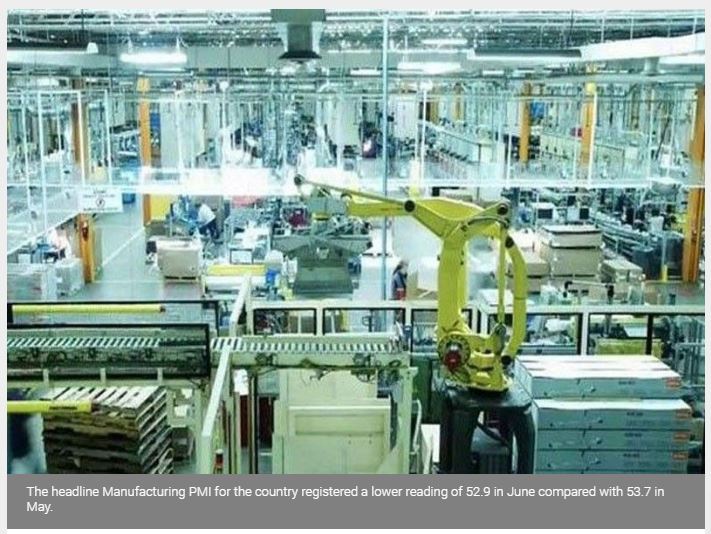Philippines: Manufacturing posts slower growth in June
MANILA, Philippines — Domestic factory output sustained growth, although at a slower pace in June because of slower increases in output and new orders coupled with persisting inflationary pressures, according to the Nikkei Philippines Manufacturing Purchasing Managers’ Index (PMI) released yesterday.
The headline Manufacturing PMI for the country registered a lower reading of 52.9 in June compared with 53.7 in May, still in the growth territory as a reading of below 50 indicates contraction. The headline PMI provides a quick overview of the health of the manufacturing sector based on output, new orders, job creation, inventories, and delivery times.
IHS Markit, the firm that compiled data for the PMI said domestic and foreign demand for Philippine manufactured goods remained steady in June, encouraging firms to increase procurement of inputs and increase production.
Greater demand for inputs, however, strained supply chains, raising the cost of inputs.
IHS Markit said there was evidence that input costs continued to rise sharply because of both domestic and external factors such as a weaker peso, higher taxes, as well as increased price of raw materials – particularly copper and fuel.
Vendors also took longer to deliver inputs because of the combination of supply shortages, bad weather, port congestion, and delays in customs clearance.
As a result, firms once again raised factory gate prices to protect profit margins.
Despite firm demand, purchasing managers reported spare capacity, resulting to moderate hiring in June.
“The average PMI reading for the three months to June was noticeably higher than the first quarter average. However, input cost inflation remained steep, as a combination of domestic and external factors were responsible for the upward pressure. The depreciation of the peso, increased taxes, supply shortages, higher global commodity prices, especially for fuel, all contributed to inflation,” said IHS Markit principal economist Bernard Aw.
Elevated factory gate prices, he said, would continue to stoke consumer inflation in the coming months and may lead to further rate hikes.
“As a result, factory gate price hikes remained sharp, which could feed through to consumer inflation in coming months, thereby adding to expectations for further rate hikes,” said Aw.
Philippine manufacturing was the third best performing in the ASEAN region in June next to Vietnam and Singapore, according to the Nikkei ASEAN Manufacturing PMI. Behind the Philippines were Indonesia, Thailand, Myanmar, and Malaysia.
The headline ASEAN PMI likewise registered a lower reading of 51.0 in June from 51.4 in May, but is still a solid increase that took the quarterly average to the best in four years.
IHS Markit attributed the lower reading in June to weaker increases in output and new orders.
Manufacturers across the region continued to face input cost inflation at the end of the first half of the year, said the firm. Purchasing managers cited global supply shortages of commodities and higher prices of raw materials.
Consistent with greater production costs, ASEAN manufacturers also raised selling prices, with Philippine firms raising prices at the fastest pace.
“Higher prices will then put central banks across the region on high alert at a time where policymakers are worried about the potential damaging impact of rising trade tensions on their economies,” said Aw.
Source: https://www.philstar.com/business/2018/07/03/1829946/manufacturing-posts-slower-growth-june#zewptHv11OtQaYAE.99


 English
English




